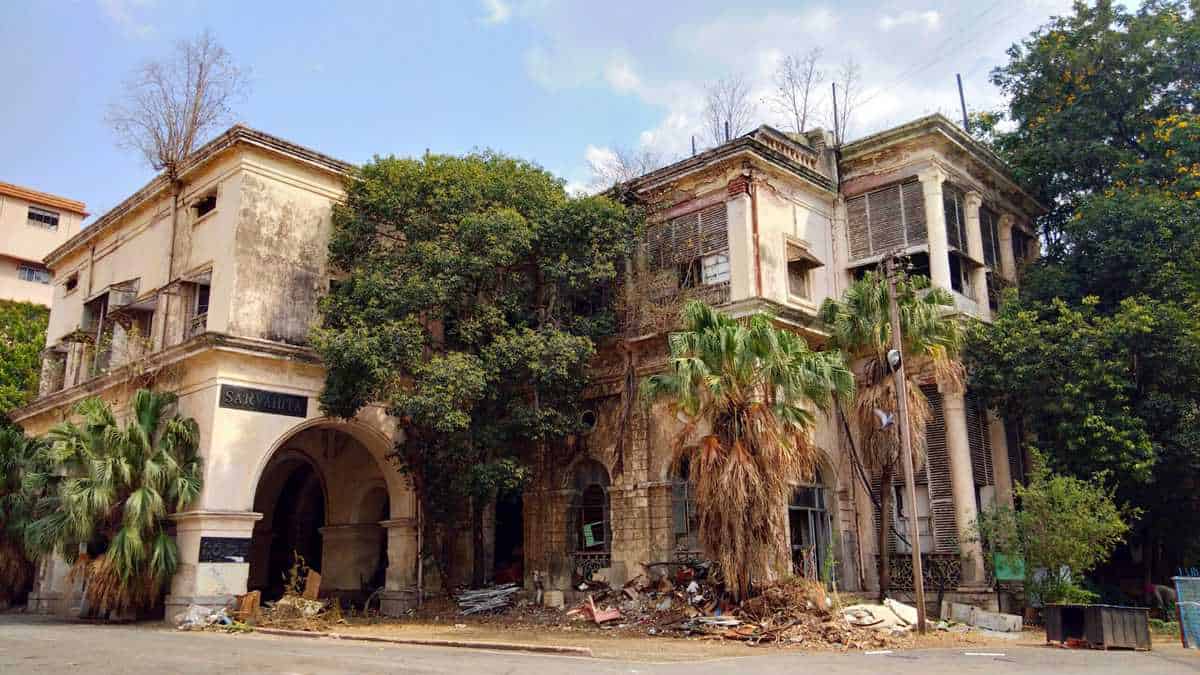By Sruthi
Hyderabad: In the wee hours of Tuesday (July 7), the Government of Telangana has begun the demolition of Secretariat complex in less than ten days after the High Court paved the way for the same.
This also means that the 132-year old Saifabad Palace which forms the G-Block of the complex, a former seat of administration in the Nizam and the post-Nizam era would slip into history.
The palace, which was later renamed as Samhita (G-Block), was constructed in 1888 under the Sixth Nizam, Mir Mahaboob Ali Khan. The construction of the building was inspired by London’s Buckingham Palace and was dominated by European-style architecture. The plastering was done by a special kind of dung-based lime which kept the whole building cool during scorching summers.
The Nizam carried out the administration from this palace though he never formally moved there. The building remained in a dilapidated state ever since the then chief minister N T Rama Rao shifted his office to a different block.
The reason for the neglect of this historical structure can be attributed to superstitions. Ever since the palace has been constructed, it was considered jinxed. According to some sources it’s so called jinxed was attributed to rumours spread by some vested interest groups.
Heritage conversation expert Mohd. Safiullah says there is an interesting story behind the Sixth Nizam not staying in Saifabad Palace.
Mahboob Ali Khan had two nobles: One, Sir Afsar Ul Mulk, who was his commander-in-chief, who was gifted with a beautiful palace Rahat Manzil at Saifabad, which was later demolished to construct the present Reserve Bank of India building. The other was Fakhr Ul Mulk, who constructed another beautiful palace Errum Manzil at Khairatabad close to Saifabad Palace.
Both the nobles did somehow not like the idea of Mahboob Ali Khan constructing the Saifabad Palace, which was closer to their own mansions. “So, they hatched a plan to prevent the Sixth Nizam from occupying the new palace, taking advantage of his belief in superstitions,” he said.
One day, on coming to know that Mahboob Ali Khan was coming to Saifabad Palace to oversee the final stages of its construction, the two nobles hired a person and asked him to let a “monitor lizard” off on the road just before the Nizam passing that route.
As Nizam’s vehicle was approaching the palace, the person released the monitor lizard which crossed his path. On seeing the lizard, the Nizam stopped his vehicle and asked the driver to return. He believed that a monitor lizard crossing the path of a person was a bad omen. “That was how Mahboob Ali Khan did not realize his dream of staying in a beautiful palace on the banks of Hussain Sagar,” Safiullah said.
Decades later, N T Rama Rao shifted the entrance of the Secretariat Complex to face East away from the building which was towards the North, owing to Vaastu (Hindu science of architecture) which left the palace in a perpetual state of neglect.

